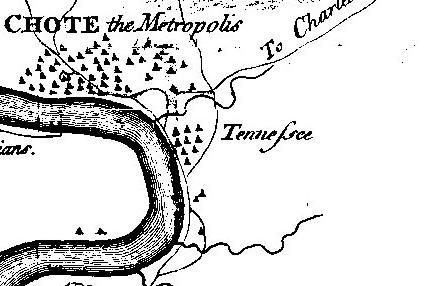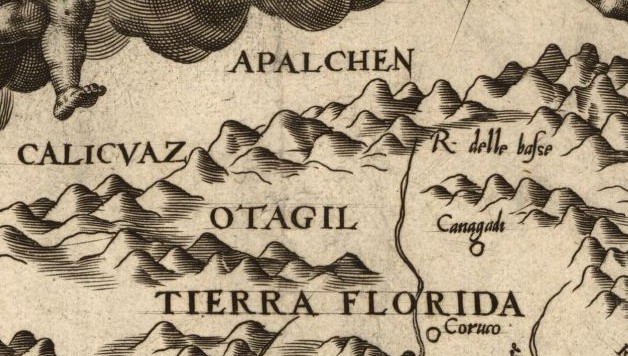|
Fuscidea Appalachensis
''Fuscidea appalachensis'' is a species of saxicolous (rock-dwelling) in the family Fuscideaceae. Found in North America, it was formally described as a new species in 2008 by lichenologist Alan Fryday. The type specimen was collected from top of Tabor Gully in Baxter State Park (Maine) at an elevation of . Here it was found growing on damp rocks on the side of the gully. The pale grey crustose thalli of ''Fuscidea appalachensis'' are in diameter, although neighbouring lichens may coalesce to form larger thalli. The lichen contains divaricatic acid, a secondary compound that can be detected using thin-layer chromatography. The specific epithet alludes to the range of the lichen—the Appalachian Mountains in eastern North America, ranging from New Brunswick to Tennessee Tennessee ( , ), officially the State of Tennessee, is a landlocked state in the Southeastern region of the United States. Tennessee is the 36th-largest by area and the 15th-most populous of the 50 s ... [...More Info...] [...Related Items...] OR: [Wikipedia] [Google] [Baidu] |
Oak Mountain State Park
Oak Mountain State Park is a public recreation area located approximately south of Birmingham in the northeast quadrant of the city of Pelham, Alabama, United States. It is the state's largest state park at and is home to the Alabama Wildlife Center, Oak Mountain Interpretive Center, and Oak Mountain BMX Track. Park activities include hiking, running, mountain biking, swimming, camping, fishing, horseback riding, and golf. The park is managed by the Alabama Department of Conservation and Natural Resources. History Oak Mountain was created when the State Land Act of 1927 granted the park the between Double Oak Mountain and Little Oak Ridge. From 1934 to 1941, the park saw improvements made by the Civilian Conservation Corps (CCC) and the Works Progress Administration. Remnants of the CCC era—foundations, bridges and other infrastructure, often made of stone quarried from within the park—can be seen throughout the park. In 1943, the National Park Service (NPS) deeded t ... [...More Info...] [...Related Items...] OR: [Wikipedia] [Google] [Baidu] |
Thin-layer Chromatography
Thin-layer chromatography (TLC) is a chromatography technique used to separate non-volatile mixtures. Thin-layer chromatography is performed on a sheet of an inert substrate such as glass, plastic, or aluminium foil, which is coated with a thin layer of adsorbent material, usually silica gel, aluminium oxide (alumina), or cellulose. This layer of adsorbent is known as the stationary phase. After the sample has been applied on the plate, a solvent or solvent mixture (known as the mobile phase) is drawn up the plate via capillary action. Because different analytes ascend the TLC plate at different rates, separation is achieved. It may be performed on the analytical scale as a means of monitoring the progress of a reaction, or on the preparative scale to purify small amounts of a compound. TLC is an analytical tool widely used because of its simplicity, relative low cost, high sensitivity, and speed of separation. TLC functions on the same principle as all chromatography: a ... [...More Info...] [...Related Items...] OR: [Wikipedia] [Google] [Baidu] |
Lichens Of Eastern Canada
A lichen ( , ) is a composite organism that arises from algae or cyanobacteria living among filaments of multiple fungi species in a mutualistic relationship.Introduction to Lichens – An Alliance between Kingdoms . University of California Museum of Paleontology. Lichens have properties different from those of their component organisms. They come in many colors, sizes, and forms and are sometimes plant-like, but are not s. They may have tiny, leafless branches (); flat leaf-like structures ( [...More Info...] [...Related Items...] OR: [Wikipedia] [Google] [Baidu] |
Lichen Species
A lichen ( , ) is a composite organism that arises from algae or cyanobacteria living among filaments of multiple fungi species in a mutualistic relationship.Introduction to Lichens – An Alliance between Kingdoms . University of California Museum of Paleontology. Lichens have properties different from those of their component organisms. They come in many colors, sizes, and forms and are sometimes plant-like, but are not s. They may have tiny, leafless branches ( fruticose); flat leaf-like structures ( [...More Info...] [...Related Items...] OR: [Wikipedia] [Google] [Baidu] |
Umbilicariales
The Umbilicariales are an order of lichenized fungi in the subclass Umbilicariomycetidae, class Lecanoromycetes. It contains five families: Elixiaceae, Fuscideaceae, Ophioparmaceae, Ropalosporaceae, and Umbilicariaceae. Umbilicariales was proposed as a new order in 2007, while the subclass Umbilicariomycetidae was proposed in 2013. Families and genera , Species Fungorum accepts 5 families, 18 genera, and 107 species in the order Umbilicariales: * Elixiaceae ::'' Elixia'' – 2 spp. ::'' Meridianelia'' – 1 sp. *Fuscideaceae ::'' Albemarlea'' – 1 sp. ::''Fuscidea'' – 31 spp. ::''Hueidea'' – 1 sp. ::''Lettauia'' – 2 sp. ::'' Maronea'' – 2 spp. ::'' Maronora'' – 1 sp. ::''Orphniospora'' – 2 spp. *Ophioparmaceae ::'' Boreoplaca'' – 1 sp. ::''Hypocenomyce'' – 5 spp. ::''Ophioparma'' – 4 spp. ::'' Rhizoplacopsis'' – 1 sp. * Ropalosporaceae ::''Ropalospora'' – 8 spp. * Umbilicariaceae ::'' Fulgidea'' – 2 spp. ::''Lasallia'' – 5 spp. ::''Umbilicaria' ... [...More Info...] [...Related Items...] OR: [Wikipedia] [Google] [Baidu] |
Tennessee
Tennessee ( , ), officially the State of Tennessee, is a landlocked state in the Southeastern region of the United States. Tennessee is the 36th-largest by area and the 15th-most populous of the 50 states. It is bordered by Kentucky to the north, Virginia to the northeast, North Carolina to the east, Georgia, Alabama, and Mississippi to the south, Arkansas to the southwest, and Missouri to the northwest. Tennessee is geographically, culturally, and legally divided into three Grand Divisions of East, Middle, and West Tennessee. Nashville is the state's capital and largest city, and anchors its largest metropolitan area. Other major cities include Memphis, Knoxville, Chattanooga, and Clarksville. Tennessee's population as of the 2020 United States census is approximately 6.9 million. Tennessee is rooted in the Watauga Association, a 1772 frontier pact generally regarded as the first constitutional government west of the Appalachian Mountains. Its name derives fr ... [...More Info...] [...Related Items...] OR: [Wikipedia] [Google] [Baidu] |
New Brunswick
New Brunswick (french: Nouveau-Brunswick, , locally ) is one of the thirteen Provinces and territories of Canada, provinces and territories of Canada. It is one of the three Maritime Canada, Maritime provinces and one of the four Atlantic Canada, Atlantic provinces. It is the only province with both Canadian English, English and Canadian French, French as its official languages. New Brunswick is bordered by Quebec to the north, Nova Scotia to the east, the Gulf of Saint Lawrence to the northeast, the Bay of Fundy to the southeast, and the U.S. state of Maine to the west. New Brunswick is about 83% forested and its northern half is occupied by the Appalachians. The province's climate is continental climate, continental with snowy winters and temperate summers. New Brunswick has a surface area of and 775,610 inhabitants (2021 census). Atypically for Canada, only about half of the population lives in urban areas. New Brunswick's largest cities are Moncton and Saint John, New Brun ... [...More Info...] [...Related Items...] OR: [Wikipedia] [Google] [Baidu] |
Appalachian Mountains
The Appalachian Mountains, often called the Appalachians, (french: Appalaches), are a system of mountains in eastern to northeastern North America. The Appalachians first formed roughly 480 million years ago during the Ordovician Period. They once reached elevations similar to those of the Alps and the Rocky Mountains before experiencing natural erosion. The Appalachian chain is a barrier to east–west travel, as it forms a series of Ridge-and-Valley Appalachians, alternating ridgelines and valleys oriented in opposition to most highways and railroads running east–west. Definitions vary on the precise boundaries of the Appalachians. The United States Geological Survey (USGS) defines the ''Appalachian Highlands'' Physiographic regions of the world, physiographic division as consisting of 13 provinces: the Atlantic Coast Uplands, Eastern Newfoundland Atlantic, Maritime Acadian Highlands, Maritime Plain, Notre Dame and Mégantic Mountains, Western Newfoundland Mountains, Pied ... [...More Info...] [...Related Items...] OR: [Wikipedia] [Google] [Baidu] |
Botanical Name
A botanical name is a formal scientific name conforming to the ''International Code of Nomenclature for algae, fungi, and plants'' (ICN) and, if it concerns a plant cultigen, the additional cultivar or Group epithets must conform to the '' International Code of Nomenclature for Cultivated Plants'' (ICNCP). The code of nomenclature covers "all organisms traditionally treated as algae, fungi, or plants, whether fossil or non-fossil, including blue-green algae ( Cyanobacteria), chytrids, oomycetes, slime moulds and photosynthetic protists with their taxonomically related non-photosynthetic groups (but excluding Microsporidia)." The purpose of a formal name is to have a single name that is accepted and used worldwide for a particular plant or plant group. For example, the botanical name '' Bellis perennis'' denotes a plant species which is native to most of the countries of Europe and the Middle East, where it has accumulated various names in many languages. Later, the plant w ... [...More Info...] [...Related Items...] OR: [Wikipedia] [Google] [Baidu] |
Secondary Metabolite
Secondary metabolites, also called specialised metabolites, toxins, secondary products, or natural products, are organic compounds produced by any lifeform, e.g. bacteria, fungi, animals, or plants, which are not directly involved in the normal growth, development, or reproduction of the organism. Instead, they generally mediate ecological interactions, which may produce a selective advantage for the organism by increasing its survivability or fecundity. Specific secondary metabolites are often restricted to a narrow set of species within a phylogenetic group. Secondary metabolites often play an important role in plant defense against herbivory and other interspecies defenses. Humans use secondary metabolites as medicines, flavourings, pigments, and recreational drugs. The term secondary metabolite was first coined by Albrecht Kossel, a 1910 Nobel Prize laureate for medicine and physiology in 1910. 30 years later a Polish botanist Friedrich Czapek described secondary ... [...More Info...] [...Related Items...] OR: [Wikipedia] [Google] [Baidu] |
Alabama
(We dare defend our rights) , anthem = " Alabama" , image_map = Alabama in United States.svg , seat = Montgomery , LargestCity = Huntsville , LargestCounty = Baldwin County , LargestMetro = Greater Birmingham , area_total_km2 = 135,765 , area_total_sq_mi = 52,419 , area_land_km2 = 131,426 , area_land_sq_mi = 50,744 , area_water_km2 = 4,338 , area_water_sq_mi = 1,675 , area_water_percent = 3.2 , area_rank = 30th , length_km = 531 , length_mi = 330 , width_km = 305 , width_mi = 190 , Latitude = 30°11' N to 35° N , Longitude = 84°53' W to 88°28' W , elevation_m = 150 , elevation_ft = 500 , elevation_max_m = 735.5 , elevation_max_ft = 2,413 , elevation_max_point = Mount Cheaha , elevation_min_m = 0 , elevation_min_ft = 0 , elevation_min_point = Gulf of Mexico , OfficialLang = English , Languages = * English 95.1% * Spanish 3.1% , population_demonyms = Alabamian (We dare defend our rights) , anthem = "Alabama (state song), Alabama" , i ... [...More Info...] [...Related Items...] OR: [Wikipedia] [Google] [Baidu] |







.jpg)
